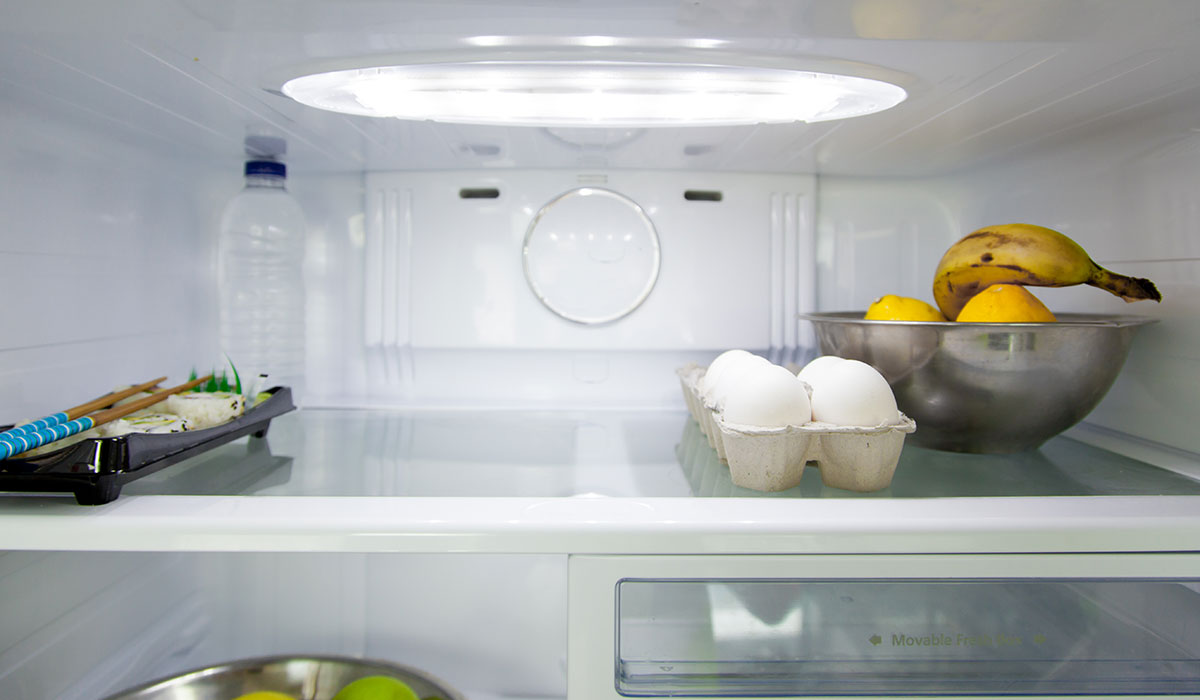This Is How To Organize and Clean Your Fridge

open fridge image via shutterstock
As Memorial Day weekend approaches, many people are getting their apartments and closets “summer ready.” If your salt-laden Bean Boots are still sitting by your front door (we’re guilty, too), it’s time to finally make the transition from winter to summer. But, in addition to your apartment and closet, there’s something else that should be cleaned up: your fridge. Here are our tips for how to spring clean one of the most important appliances in your kitchen.
Fridge Sanitation: Food safety starts with keeping your fridge clean. Start by removing food items, and take out any removable surface areas. Throw out any aged, moldy, or inedible food, and be sure to bag it all securely to prevent leakage or mold distribution. Wash surfaces by hand with warm water and soap or a homemade natural cleaning solution, such as two tablespoons of baking soda and one quart of hot water.
Fridge Safety: Keep a thermometer in the fridge to ensure that items are 40F or below. Perishable foods should be kept in their own separate drawer at the bottom of the fridge to prevent cross-contamination and ensure optimal temperature. Keep eggs, milk, and yogurt separately in the middle of the fridge or in a separate compartment for optimal freshness. The bottom drawers are best for fruits and veggies to maintain crispness. Do not wash fresh produce until you’re ready to use it.
Fridge Storage: Fresh meats, chicken, and fish can remain in the fridge for one to two days. Lunch meats, leftovers, salad, and milk last between three and five days. Yogurt and sour creams may be refrigerated for seven to ten days, whereas hard cheese can last in the fridge for three to four weeks.
Freezer: Wrap frozen foods in plastic wrap tightly for an airtight seal around and to avoid freezer burn. Be sure each item is labeled and dated.
Freezer Storage: According to the USDA, soups and stews can be frozen for two to three months. Beef can be frozen for three to four months and chicken for nine to twelve months.
Condiment Storage: Condiments should be kept on the refrigerator door as most have a high acid content, which can resist bacterial growth in warmer temperature areas. After opening condiments, the shelf life varies. Pickles and olives last about two weeks, whereas ketchup, cocktail, and chili sauces can last up to six months. Mustard has a longer lifespan of 12 months.
Bottom Line: When in Doubt, Throw It Out. You can’t always tell if a food has spoiled by its smell or appearance. Don’t take chances with your health.
The following items are what I recommend everyone should have in their kitchens this summer:
- Frozen veggies, sans sauce
- Low-fat cheese
- Peanut butter, almond butter, or cashew butter
- Keep at least two to three pieces of fresh fruit on the countertop, such as apples, pears, or oranges
- Hard boiled eggs are easy to pair with fruit and a handful of almonds for a healthy breakfast on to go
- Salsa and hummus
- Avocados for smoothies or spreads
- Unsalted trail mixes are more nutritious than the peanut and dried fruit filled alternatives


